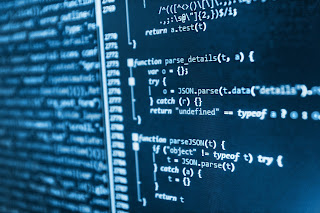Big Data Programming Languages
Introduction to Big Data programming languages
Professionals dealing with the analysis and manipulation of big data are faced with a major challenge in choosing the programming language used for this purpose. Not only do these analysts need to understand the problem and design the architecture, but language plays a vital role in the implementation and implementation of the program architecture.
Top 5 Big Data programming languages
Let's take a look at the features of the most popular programming languages, which have proven to be extremely effective in discussing big data analysis, data storage and related data mining tools and structures. There are those who can be supplied by them. Programming languages.
1. Scala
Because of its fast and robust functionality, the Scala language is a very popular choice among professionals dealing with Big Data analysis. This is because the programming language is designed to bridge the gap between functional programming models and object-oriented programming.
The power of scalar can be demonstrated by the fact that the two most popular frameworks used to process big data are Apache Spark and the main framework used for Apache Kafka Scala.
Another major reason for Steel's preference for the program is that it runs on a Java-based ecosystem that serves big data, which increases its capacity and the range of languages in which it operates. Can be used
On the other hand, it is less literal than Java. (For example, you must teach 15 lines of code in Scala, which is equivalent to 100 lines for Java)
One thing that we can observe in the case of scales is that it presents a very high learning risk, which makes it very difficult for beginners to use it effectively.
2. Python
Python has become the most versatile programming language that can be used in a very broad spectrum, including Big Data programming.
Many data analysis libraries such as Skype, Nampi or Panda are based on the manipulation and cleaning of Big Data frames.
Famous frameworks for deep learning / machine learning such as tensorflow and skate learning are based on Python.
One of the most notable drawbacks of Python is that if the level of transmission is slower than that of modern languages.
On the other hand, the best feature of Python is that it can integrate with pre-existing Big Data frameworks like Hudop and Spark and allows the performance of these predictive analytics without any hassle.
3. A.
R is the statistical language based on samples of data and is one of the most efficient languages used for data analysis which is precise in quantitative terms.
The programming language comes with a large repository of CRAN packages or a complete archive network that helps you accomplish the task of processing large data using the tool repository.
Like Python, language blends perfectly with the spark and the hood, creating better statistics and accuracy.
This is the biggest language gap when it comes to analyzing big data, which means that the language in which the courts are written is not directly reproducible for production but can be translated into d 'other programming languages. Can also be translated, making it a while. Do strenuous work.
4. Java
Although Java is an older programming language, it is the most traditional executive used for analyzing big data and associated ecosystems that is still used by many companies today.
The main advantage of using Java is its ease and stability compared to contemporary programming languages and its ease of production due to its content of product / service delivery.
The language has been tested and tested and has a pool of tools and libraries that can be used to perform various operations and monitor large data applications. Understand.
The biggest drawback of the programming language is its length. This can be done by using 15 to 20 lines of code essence around the 10 line code in Python in Java.
The Java 8 Lambda function update aims to reduce this speed to some extent.
5. Go
Go is the latest version of programming languages used by a group of Google engineers for big data infrastructures and related functionality who were trying to develop a language lighter than C ++.
Powers a range of big data infrastructures and processing tools, such as GoDecker and Cubernets, to name a few.
Compared to reviews of its contents, it's easy to get interested in app development by making it one of the best choices for aspiring big data developers.
Compared to its modern programming languages, it is relatively easy to interface other programming languages using the former based system.
In addition, companies have studied the use of programming languages to develop data analysis systems due to their affiliation with Google.
MetLab, Julia and SAS are other major languages used for big data analysis and have their own useful features that allow different developers to use them.
To draw conclusions
Big data analysis is a very broad horizon that covers many functions and you need to understand the nature of the work you want to do with the data set. A programmer must identify the core values of the research he or she performs if he or she has a large number of statistics. R is the answer. But if he wants to use predictive modeling, then Python is a better choice.
The most important thing is to keep up-to-date with developments (including new programming languages being developed) and stay comfortable to get the most out of all these languages. In addition, continuous improvement of skills and ability to solve a problem and increase one's attitude towards the complexity of big data is the best tool available for a developer.










Comments
Post a Comment
If u like this then subscribe and follow me..........................thanks for visiting 👍😉